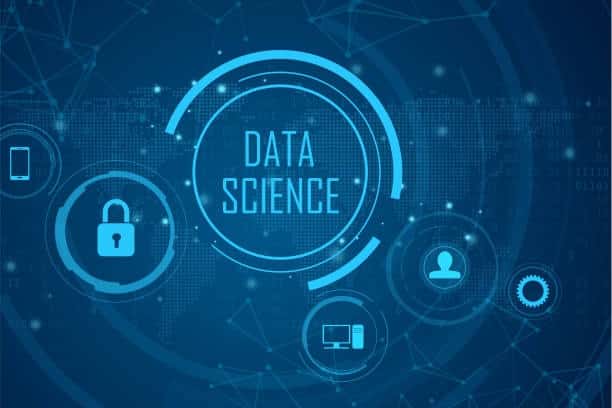As businesses rely more on data to make informed decisions, the field of business analytics continues to expand, offering numerous high-paying job roles across sectors. From helping companies optimize marketing strategies to improving operational efficiency, business analytics professionals play crucial roles.
This article explores the most lucrative roles in business analytics, outlining each role’s responsibilities, salary expectations, and required skills.
Top High-Paying Business Analytics Jobs
1. Chief Data Officer (CDO)
- Role Overview: As a Chief Data Officer, you manage an organization’s data assets and data strategies, making high-level decisions to optimize data management and drive value from data resources.
- Responsibilities: Overseeing data governance, ensuring data quality, and guiding strategic data initiatives across the organization. CDOs play a key role in shaping policies for data privacy and usage, ensuring that data supports business goals effectively.
- Average Salary Range: $150,000–$250,000 per year.
- Skills Needed: Leadership, strategic planning, data governance, and communication.
Interested in learning more about the Chief Data Officer role and how to get started? Check out how to become a Chief Data Officer!
2. Business Intelligence Analyst
- Role Overview: Business Intelligence Analysts collect and analyze business data, identify trends, and develop visual reports to aid decision-making. They enable organizations to use data strategically to address business challenges.
- Responsibilities: Using data visualization tools, conducting trend analysis, and creating interactive dashboards in tools like Tableau or Power BI. BI Analysts also work closely with stakeholders to interpret findings and support business strategies.
- Average Salary Range: $70,000–$110,000 per year.
- Skills Needed: Data visualization, SQL, Excel, and communication skills.
3. Data Analyst
- Role Overview: Data Analysts process and analyze data to extract actionable insights. Their role often involves preparing data reports and performing statistical analyses to support organizational decision-making.
- Responsibilities: Data cleaning and preparation, generating reports, performing statistical analysis, and creating visualizations to communicate data insights clearly.
- Average Salary Range: $60,000–$90,000 per year.
- Skills Needed: SQL, Excel, data visualization tools, and analytical thinking.
4. Quantitative Analyst
- Role Overview: Quantitative Analysts, or “quants,” apply statistical models and financial theories to assess risks and identify investment opportunities, primarily in the finance industry.
- Responsibilities: Building and testing financial models, assessing risk factors, interpreting complex data, and advising on investment strategies.
- Average Salary Range: $85,000–$130,000 per year.
- Skills Needed: Advanced math, statistical analysis, programming (Python, R), and finance knowledge.
5. Operations Research Analyst
- Role Overview: Operations Research Analysts use mathematical models and analytical methods to improve business processes and solve operational challenges within organizations.
- Responsibilities: Conducting analyses to improve operational efficiency, optimizing processes, and helping reduce costs. They often work in logistics, manufacturing, and supply chain management.
- Average Salary Range: $60,000–$100,000 per year.
- Skills Needed: Optimization, modeling, and statistical analysis.
6. Analytics Manager
- Role Overview: Analytics Managers lead data teams, oversee analytics projects, and develop data-driven strategies that align with organizational goals.
- Responsibilities: Managing teams, coordinating projects, setting analytics goals, and ensuring insights are actionable and aligned with business objectives. They act as the bridge between data teams and executives.
- Average Salary Range: $90,000–$140,000 per year.
- Skills Needed: Project management, leadership, data analysis, and business acumen.
7. Machine Learning Engineer
- Role Overview: Machine Learning Engineers design and implement algorithms that allow data to “learn” and improve autonomously, enabling predictive and automated solutions.
- Responsibilities: Developing algorithms, processing large datasets, and deploying machine learning models into production environments. They often work with frameworks like TensorFlow and handle big data technologies.
- Average Salary Range: $40,000–$100,000 per year.
- Skills Needed: Machine learning, big data tools, Python, and TensorFlow or similar frameworks.
Essential Skills Needed for Top Business Analytics Roles
Technical Skills
1. Microsoft Excel
- Overview: Excel remains one of the most widely used tools in data analysis due to its versatility and powerful features.
- Key Functions: Proficiency in advanced functions (e.g., VLOOKUP, INDEX-MATCH, pivot tables) and data visualization tools (e.g., charts and conditional formatting) is critical.
- Applications: Excel is often used for data cleaning, preliminary analysis, and creating reports. Analysts frequently use Excel for financial modeling, budget tracking, and data manipulation.
You can check out our free courses to start your learning at no cost.
- Excel for Beginners Free Course.
- Data Analytics using Excel Free Course
- VLOOKUP in Excel Free Course
- Pivot Tables in Excel Free Course
- Excel VBA for Beginners Free Course
2. Data Analysis and Visualization (Business Intelligence (BI) Tools)
- Overview: Understanding how to analyze data and present it visually is crucial for communicating insights.
- Key Tools: Familiarity with BI tools such as Tableau, Power BI, and QlikView allows analysts to create interactive dashboards and reports that help stakeholders visualize complex data sets.
- Applications: BI tools are used for data exploration, reporting, and performance monitoring, making it easier to identify trends and drive business decisions.
Start learning for free with our selection of no-cost courses.
- Data Visualization with Python Free Course
- Data Visualization with R Free Course
- Data Visualization With Power BI Free Course
- Tableau Dashboards For Beginners Free Course.
3. Knowledge of Programming Languages (e.g., Python, R)
- Overview: Programming skills enhance data analysis capabilities, enabling analysts to work with large datasets and automate processes.
- Key Languages: Python and R are the most popular programming languages in analytics, each offering extensive libraries for data manipulation, statistical analysis, and machine learning (e.g., Pandas, NumPy for Python; dplyr, ggplot2 for R).
- Applications: Programming allows analysts to conduct more complex analyses, automate repetitive tasks, and develop custom data processing solutions.
Get started on your learning path with our range of free courses.
- Python for Data Analysis Free Course.
- NumPy Tutorial Free Course
- Python Pandas Free Course
- Introduction to R Free Course
- R programming for Data Science Free Course.
4. Machine Learning and Statistical Modeling
- Overview: A solid understanding of machine learning techniques and statistical modeling is far more important in business analytics roles.
- Key Concepts: Familiarity with algorithms such as regression, classification, clustering, and time series forecasting enables analysts to create predictive models and identify patterns in data.
- Applications: Machine learning can be applied to customer segmentation, sales forecasting, and recommendation systems, providing valuable insights that inform strategic decisions.
Access learning for free with our no cost courses
- Business Intelligence for Beginners Free Course.
- Machine Learning Modelling Free Course.
- Statistical Learning Free Course.
5. Database Management and SQL
- Overview: Database management skills and proficiency in SQL (Structured Query Language) are essential for querying and manipulating data stored in databases to make it useful to predict the insights.
- Key Functions: Having knowledge of database design, indexing, and optimization techniques can help analysts efficiently retrieve and analyze large volumes of data.
- Applications: SQL is commonly used for data extraction and analysis, allowing analysts to generate reports directly from databases and conduct in-depth analyses.
Access quality information for free with our selection of courses.
6. Creation of Reports and Dashboards
- Overview: The ability to compile data into coherent reports and dashboards is crucial for sharing insights with stakeholders.
- Key Skills: Analysts should be able to present complex data in an easy-to-understand format, using storytelling techniques to guide stakeholders through the data and findings.
- Applications: Reports and dashboards are used in business reviews, strategy sessions, and performance tracking, ensuring that key insights are communicated effectively.
Explore our top courses for free and start learning
Analytical Skills for Business Analysts
- Data Interpretation
- Knowing how to dig into raw data, find useful insights, and turn those findings into recommendations that drive business decisions.
- Statistical Analysis
- Being comfortable with stats basics like hypothesis testing, regression, and probability, so you can make informed, data-backed calls.
- Problem-Solving and Critical Thinking
- Figuring out what’s really going on with data, looking at it from all angles, and coming up with solutions that actually work.
- Data Visualization
- Creating clear, engaging charts and dashboards using tools like Tableau or Power BI, so even complex data makes sense at a glance.
- Requirements Gathering and Analysis
- Talking to stakeholders to understand what they need, and then translating that into clear, actionable requirements for projects.
Soft Skills for Business Analysts
- Communication and Data Storytelling
- Explaining complex data insights in a straightforward way, so everyone—technical or not—gets the point and sees the value.
- Collaboration and Teamwork
- Working well with different teams and building strong relationships to keep projects on track and everyone aligned.
- Adaptability
- Staying flexible and ready to adjust when project requirements shift or business needs change.
- Attention to Detail
- Making sure every detail in the data is correct so your insights are reliable and lead to good decisions.
- Time Management
- Prioritizing tasks, managing deadlines, and juggling multiple projects to keep things running smoothly and on schedule.
Upskill with a Business Analytics Course
To master these skills and advance in the field of business analytics, consider investing in a business analytics course.
These courses provide practical, hands-on experience and foundational knowledge that directly apply to business analytics jobs. Recommended programs include:
1. Great Learning’s Business Analytics Course
This buisness analytics course is offered by Great Learning is just what you need!
As India’s most prominent edtech company with a presence in over 170 countries, we’re committed to making professionals like you skilled and ready for the future.
This buisness analytics course is perfect for those who want to combine data science knowledge with business analytics.
You’ll gain a thorough understanding of statistical methods, data analysis, and machine learning while learning to apply these techniques in business scenarios.
Program Highlights:
- 12-month program with flexible Learning
- 15+ languages & tools
- Personalized Weekend Mentorship Sessions.
- HCase Studies with Real-World Datasets (Netflix, Uber, Spotify and more)
- 11 hands-on projects and 1 Capstone Project
- 40+ case studies across different industry verticals
- 40+ quizzes (25 graded) for reinands-on exposure to 15+ Languages and Tools (Python SQL, Tableau, and More)
- forcement of conceptual and practical understanding
- World-renowned Faculty and Seasoned Industry Experts
- Dedicated Learning and Career Support
- Resume Review and Interview Preparation Sessions
- Dual Certificate from UT Austin & Great Lakes
This program suits professionals looking to switch careers or upskill in data science and business analytics.
2. UT Austin Data Science and Business Analytics Program
The University of Texas at Austin’s data science and buisness analytics course stand out for a number of reasons, including:
- Faculty: Courses are taught by top UT Austin faculty and industry experts.
- Curriculum: Courses are modeled after UT’s on-campus graduate curricula.
- Hands-on projects: Students work on real-world problems.
- Mentorship: Students have access to an industry expert mentor.
- Program support: Students have access to a dedicated program support person 24/7.
- Networking: Students can network with peers and like-minded professionals.
- Interdisciplinary: Students learn from both the Department of Statistics and Data Sciences and the Department of Computer Science.
- Industry-driven: Courses teach in-demand data skills through real-world examples.
- Critical thinking: Courses encourage students to think deeply and critically about experiments, observational studies, and assumptions.
Whether you’re looking to start a new career or advance in your current role, this course equips you with the skills and knowledge you need to succeed in the dynamic world of data science.
Conclusion
Business analytics offers diverse and lucrative roles with plenty of growth potential. By understanding the different positions, responsibilities, and skills required, you can choose the right path to achieve your career goals. Enrolling in a business analytics course can be a key step in gaining the practical skills and knowledge needed to succeed.
FAQs
Quantitative Analysts use statistical models and financial theories to assess risk and guide investment strategies. They work primarily in finance and investment sectors, focusing on financial modeling and risk management. Strong math, programming (Python or R), and statistical skills are essential.
Yes, programming is beneficial in many analytics roles. Data Analysts and Machine Learning Engineers, for example, often use languages like Python, R, or SQL. However, roles like Business Analysts may rely more on tools for data visualization and reporting, so programming isn’t always essential but can be a valuable asset.
A Data Analyst primarily focuses on processing and interpreting data to uncover patterns and support decisions. In contrast, a Business Analyst bridges the gap between technical teams and business objectives, using data to recommend operational improvements. Both roles involve data analysis but differ in their end goals and focus.
Common tools include Excel, SQL, Tableau, and Power BI for data analysis and visualization. For more advanced analytics, Python, R, and big data tools like Hadoop or Spark are frequently used. Additionally, business analytics roles may require tools specific to machine learning, such as TensorFlow or Scikit-Learn for predictive analytics.









